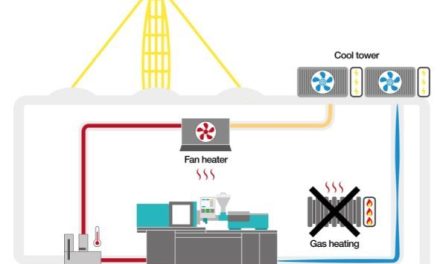Roughly 85 per cent of recently installed HVAC systems in K-12 classrooms investigated in California did not provide adequate ventilation, according to a study from UC Davis and the Department of Energy’s Lawrence Berkeley National Laboratory (Berkeley Lab).

For the study, researchers visited 104 classrooms in 11 schools throughout California that had been retrofitted with new heating, ventilation, and air conditioning (HVAC) units in the past three years. They evaluated the HVAC systems, carbon dioxide (CO2) concentrations, and indoor temperature and humidity through field inspections, monitoring, and a teacher survey.
“Previous research has shown that under-ventilation of classrooms is common and negatively impacts student health and learning,” explained lead author Rengie Chan, a research scientist with Berkeley Lab. “What isn’t known, however, is why this problem is so widespread and persistent.”
Ventilation helps remove indoor air pollutants such as volatile organic compounds, including formaldehyde, which can off-gas from building materials, finishes, and furniture. There is also increasing evidence that CO2, which is exhaled by building occupants, affects our ability to do challenging cognitive tasks. This is particularly important in classrooms, where lots of people gather in a small space.
Standards for ventilation rates are set to provide acceptable indoor air quality. ASHRAE, a global professional society that sets standards for building performance, specifies a minimum ventilation rate for classrooms of 15 cubic feet per minute per person. In California, the 2016 Building Energy Efficiency Standards, also known as Title 24, have the same ventilation requirement for classrooms.
Using measured CO2 concentrations and the number of people in the classroom, the research team found only about 15 per cent of classrooms met the ventilation standard. Researchers characterised each HVAC system by documenting the number of problems due to its hardware, controls, and filter maintenance. Classrooms with one or more HVAC problems tended to have lower ventilation rates and higher CO2 levels.
In addition to ventilation, thermal comfort is known to impact student performance. Prior studies suggest to maintain classroom mean temperature to 20 to 23 degrees Celsius. In this study, about 60 per cent of the classrooms had a mean temperature above 23oC (73F). Also, 30 per cent of the teachers surveyed were dissatisfied or very dissatisfied with the temperature in their classroom, and about ten per cent said the temperature interfered “a lot with the learning environment.”
Fortunately, the study also pinpointed simple solutions to ventilation issues. “Our study shows that proper installation, operation, and maintenance of HVAC systems is necessary to provide adequate ventilation in classrooms,” said co-author Theresa Pistochini, engineering manager at the UC Davis Western Cooling Efficiency Center.
In addition to ensuring adequate ventilation, follow-on research by Pistochini and Chan highlighted the importance of air filter choice.





